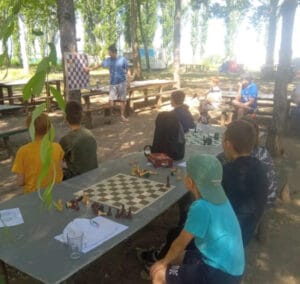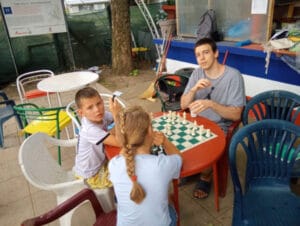There are summer camps, and then there’s a Chess summer camp where strategy meets sunlight, and minds grow stronger under the open sky. This year, we hosted an unforgettable chess experience in the beautiful town of Subotica, Serbia — a place where history, culture, and nature became the backdrop for deep thinking and joyful learning.
About Subotica – The Pearl of Northern Serbia
Before diving into the details of the camp, let’s take a moment to appreciate our host city — Subotica. Located in northern Serbia, near the Hungarian border, Subotica is known for its stunning Art Nouveau architecture, colorful facades, laid-back atmosphere, and rich multicultural heritage. It’s the perfect setting for a creative and educational adventure.
Our camp embraced that atmosphere completely — calm, focused, and inspiring.
What Is a Chess Summer Camp?
A Chess summer camp is not just about playing chess. It’s about learning to think critically, plan ahead, stay calm under pressure, and build confidence. And when you combine that with fresh air, team spirit, and healthy routines, something truly special happens.
This year, I had the pleasure of organizing and leading the camp alongside International Master Nadj Hedjesi Balind. Together, we worked with an amazing group of young chess players, helping them deepen their understanding of the game and, more importantly, enjoy the journey.
Camp Theme: Strategy in Nature – Chess Under the Sky
The 2025 theme was “Strategy in Nature – Chess Under the Sky.” And we meant it literally. Training sessions, practice games, and deep plan analysis were often held outdoors, in the shade of trees, surrounded by fresh air and peaceful sounds of nature. Our goal was to bring chess out of closed rooms and into the rhythm of nature — and the kids absolutely loved it.

What Children Learned
Strategic Thinking
Understanding not just individual moves, but the larger ideas behind them — how to evaluate positions, create long-term plans, and apply pressure in different phases of the game.
Planning and Game Analysis
Each student learned how to prepare for games and how to reflect on their performance. We taught them how to study their own games, find patterns, and improve their decision-making.
Discipline and Focus
Chess requires patience and consistency. Our training helped kids stay mentally engaged and build better habits of concentration.
Confidence Through Play
Winning and losing are both part of the process. Kids learned to embrace the journey, take responsibility for their decisions, and grow through every result.
Working in Groups
We organized students into smaller groups based on playing strength, ensuring that everyone had the right training partners and guidance at the right level.
Health and Well-Being at the Camp

Balanced Meals
Every day included freshly cooked meals designed to nourish growing minds and bodies.
Fresh Fruits and Natural Snacks
Healthy snacks and fruits were available throughout the day, giving kids sustained energy without processed sugars.
Digital Detox
Phones were used only in limited and supervised time blocks. The rest of the day was for real connection — with people, the game, and the environment.
Time Outdoors
Between sessions, children spent time playing sports, walking in nature, or just relaxing outside. This helped them stay refreshed and motivated.
Activities Outside the Chessboard
We made sure to balance training with fun. Every day included recreational activities — from team sports and board games to social time and creativity-building exercises. These activities built strong friendships and helped kids recharge between serious thinking.
The Result? A Summer to Remember
By the end of the camp, our students didn’t just leave with sharper chess skills — they left with unforgettable memories, new friends, and a renewed love for the game. Parents noticed it too: more focus, more joy, and more curiosity.
Looking Ahead – Chess Summer Camp 2026
Our Chess summer camp in Subotica is becoming a cherished yearly tradition. We’re already preparing for Chess Summer Camp 2026, and applications are now open.
Whether your child is a beginner or an experienced tournament player, our camp offers a supportive, fun, and structured environment to grow.
Apply Now
Spots are limited and fill up quickly each year. If you’d like your child to be part of our next adventure, feel free to get in touch and secure your place early.


